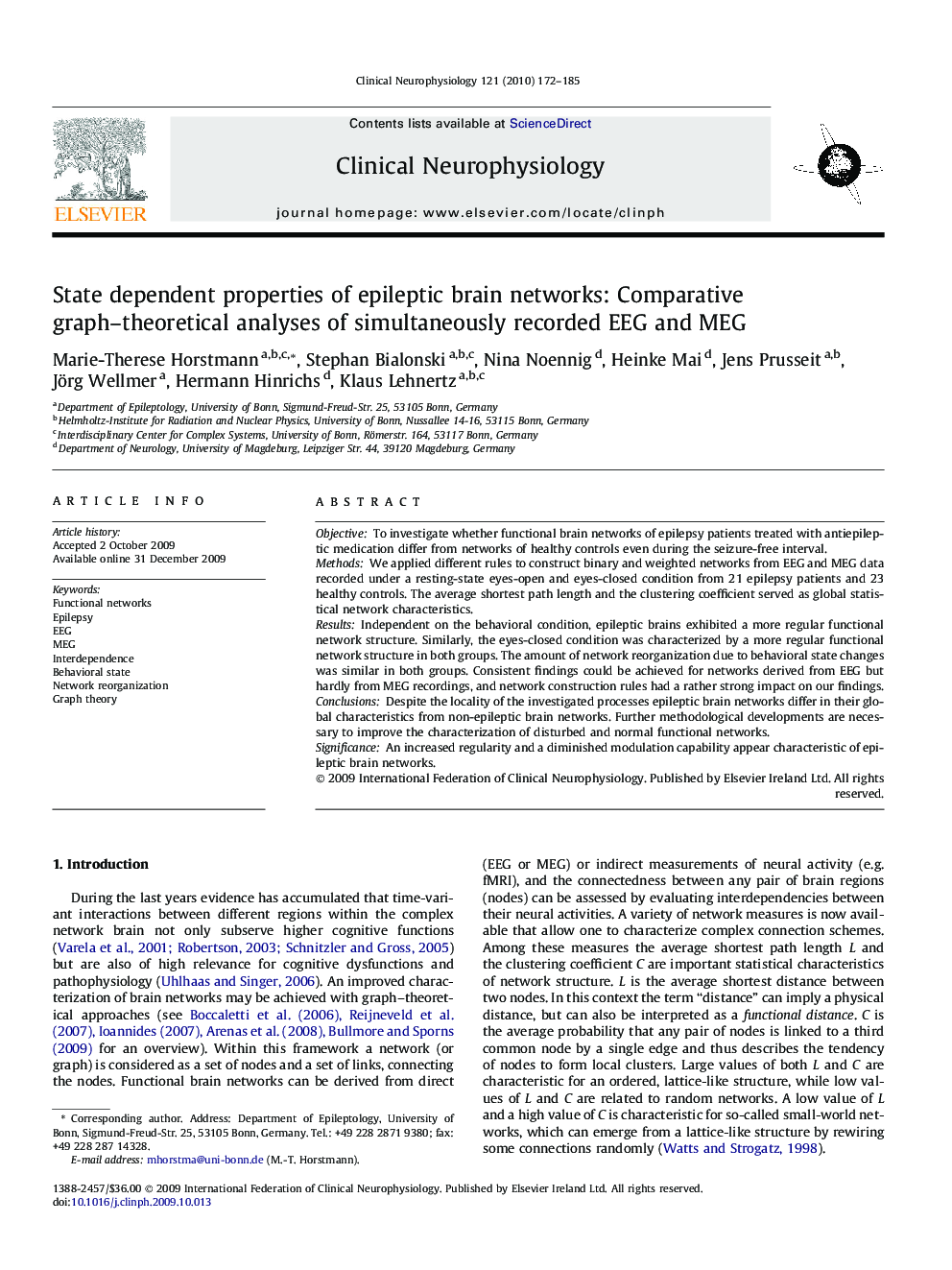| Article ID | Journal | Published Year | Pages | File Type |
|---|---|---|---|---|
| 3045319 | Clinical Neurophysiology | 2010 | 14 Pages |
ObjectiveTo investigate whether functional brain networks of epilepsy patients treated with antiepileptic medication differ from networks of healthy controls even during the seizure-free interval.MethodsWe applied different rules to construct binary and weighted networks from EEG and MEG data recorded under a resting-state eyes-open and eyes-closed condition from 21 epilepsy patients and 23 healthy controls. The average shortest path length and the clustering coefficient served as global statistical network characteristics.ResultsIndependent on the behavioral condition, epileptic brains exhibited a more regular functional network structure. Similarly, the eyes-closed condition was characterized by a more regular functional network structure in both groups. The amount of network reorganization due to behavioral state changes was similar in both groups. Consistent findings could be achieved for networks derived from EEG but hardly from MEG recordings, and network construction rules had a rather strong impact on our findings.ConclusionsDespite the locality of the investigated processes epileptic brain networks differ in their global characteristics from non-epileptic brain networks. Further methodological developments are necessary to improve the characterization of disturbed and normal functional networks.SignificanceAn increased regularity and a diminished modulation capability appear characteristic of epileptic brain networks.
